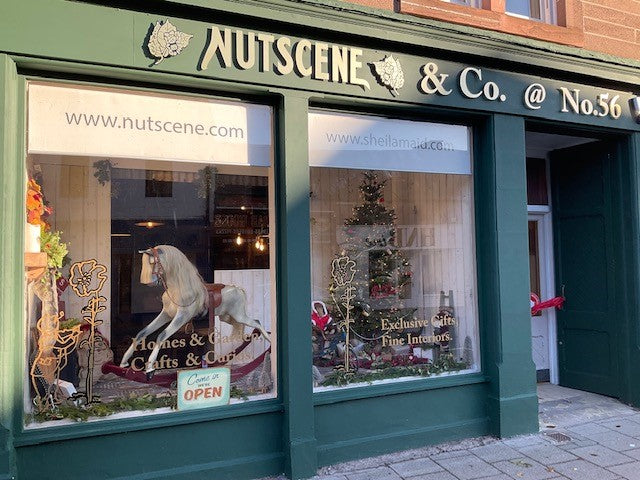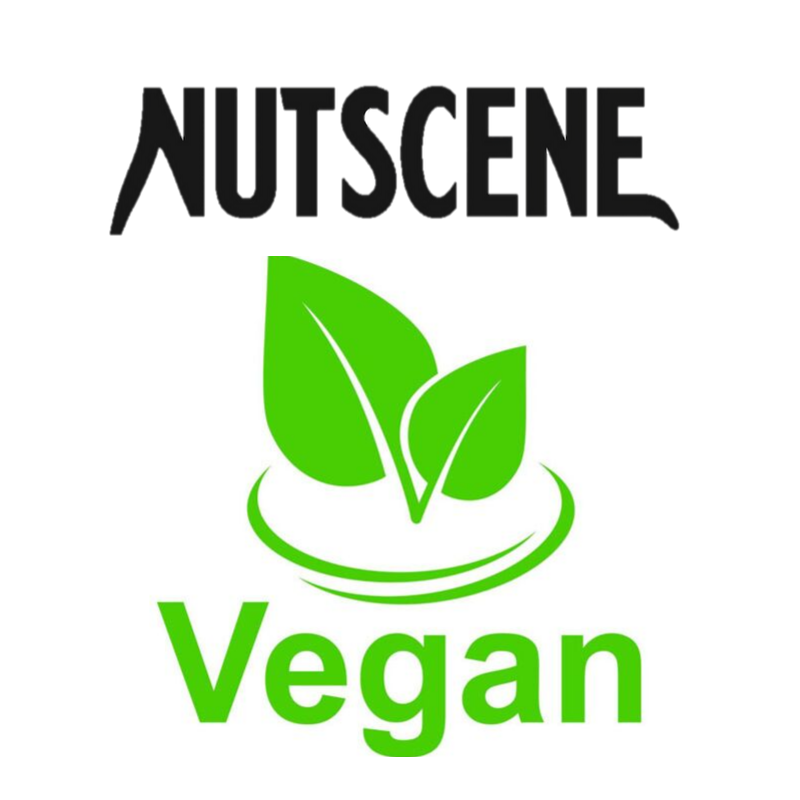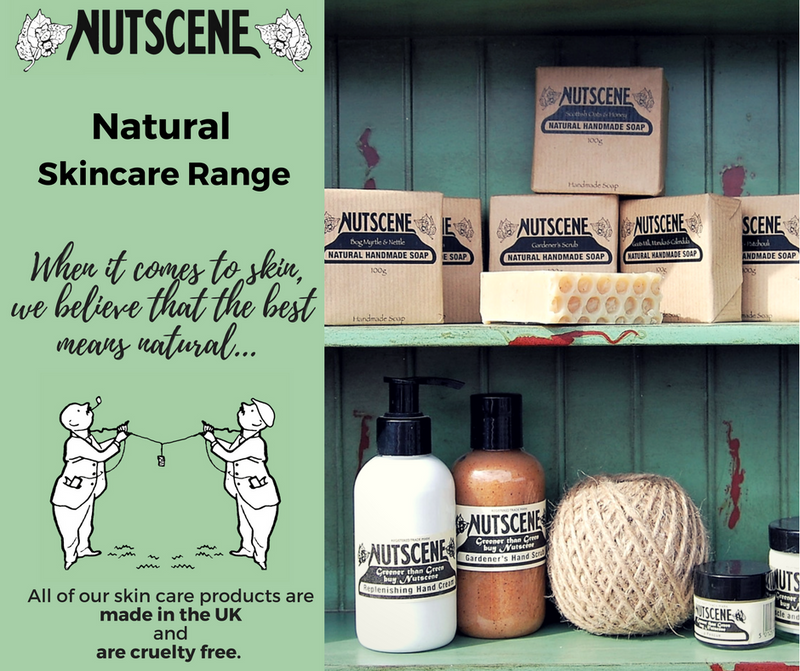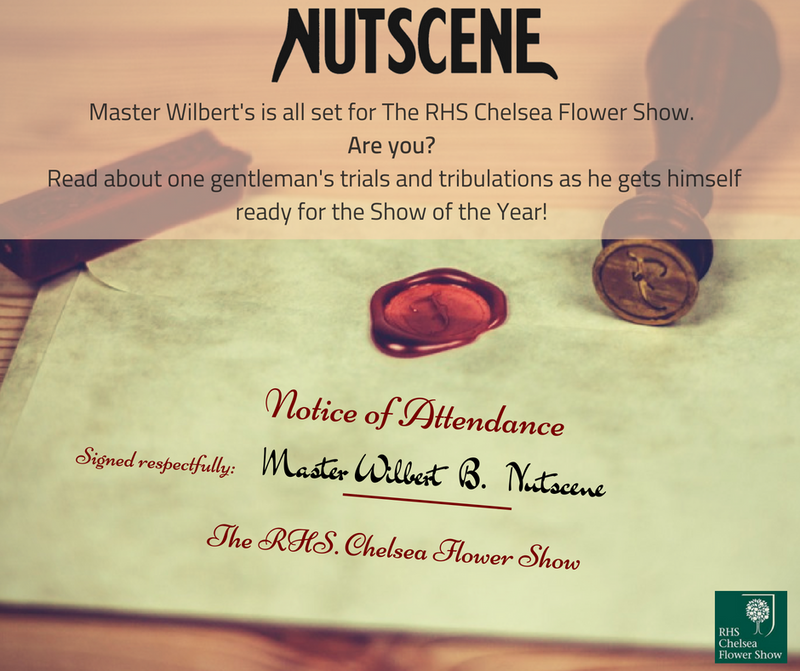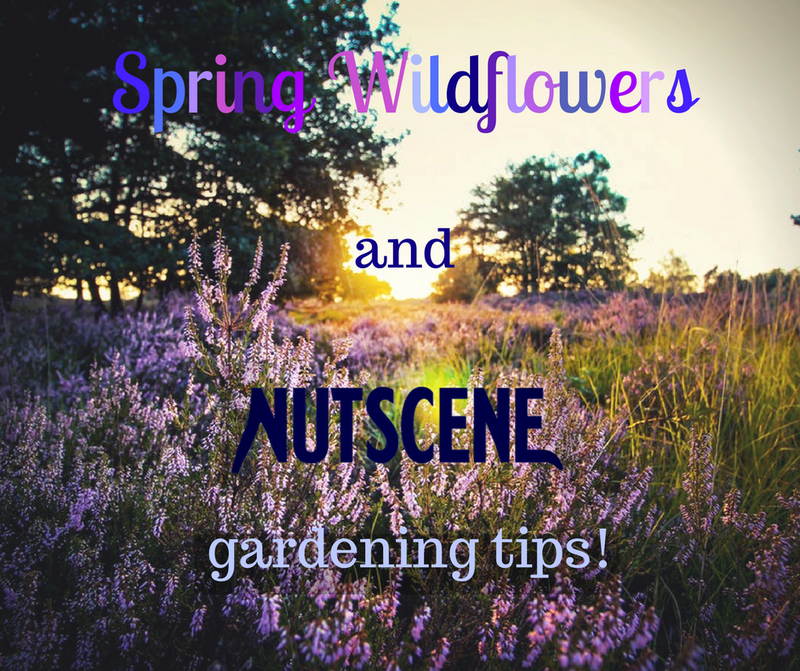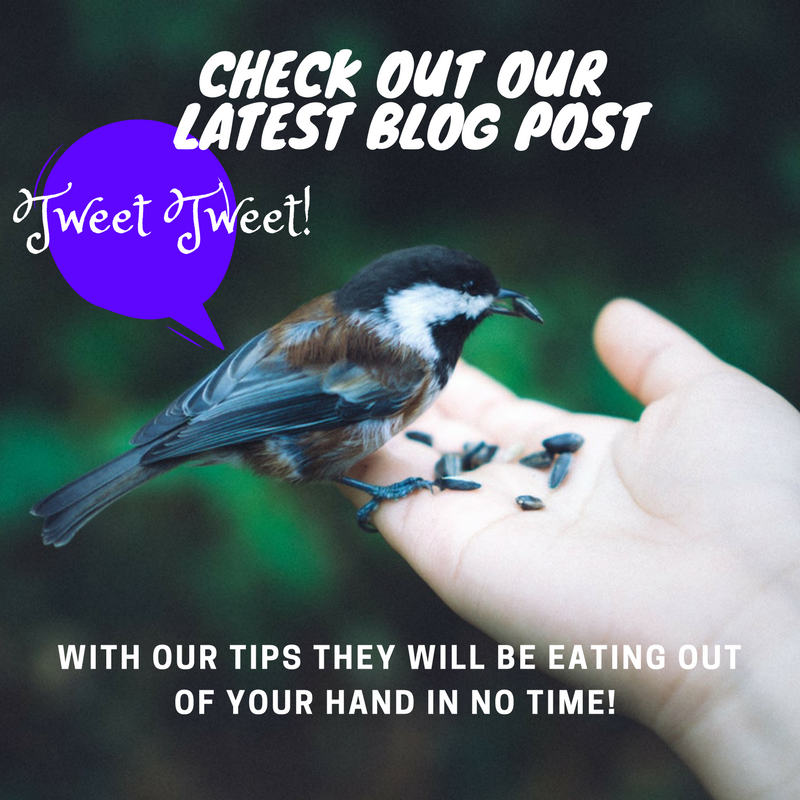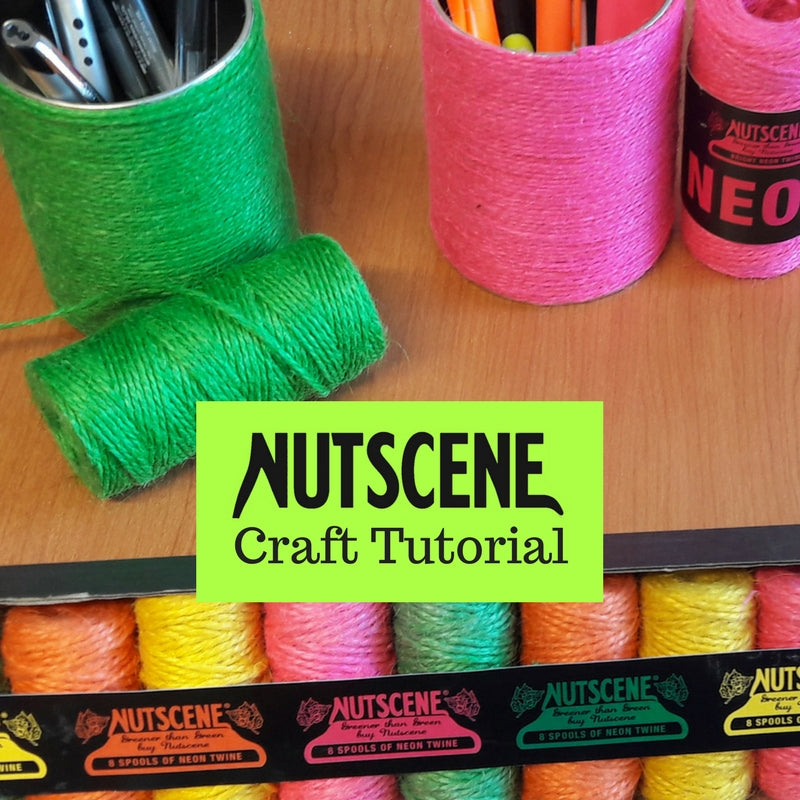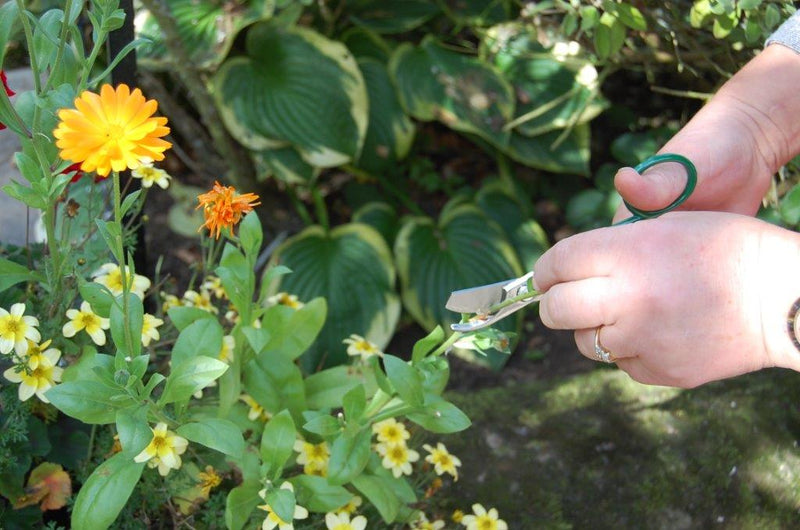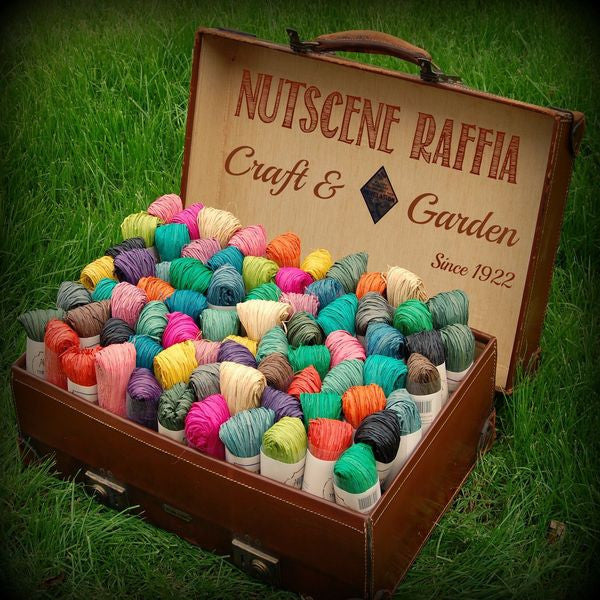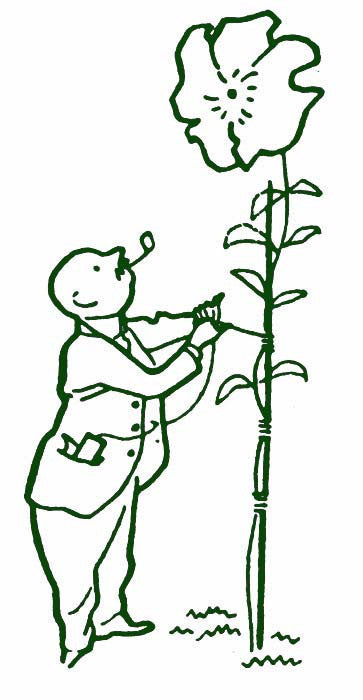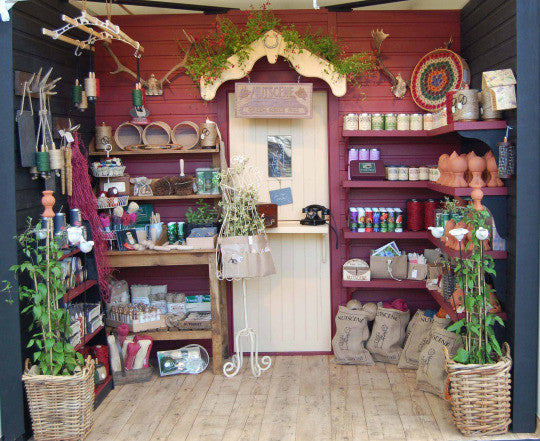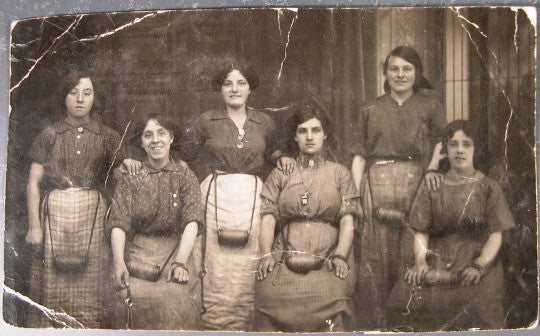
We have gone a little bee mad at Nutscene recently!
From tea towels to place mats to peg bags - we are loving our bee print!

But it isn't just bee print. We love these little furry guys!
When talking about our love of bees, one of the Nutscene Team let us into a little secret... We were told that she has been using our brightly coloured twines in her garden and she "swears that she has been seeing more bees in her garden because of it!"

Now there might be something to this! Interestingly, bees can see in colour, but just not in the same spectrum that humans can.
It is thought that flowers have developed over the years from a rather dull original formation into more complex and brilliant colours as a way to attract bees and birds. These types of animals are also referred to as pollinators.

The vibrant colours within flowers help pollinators identify the areas of nectar. Scientists believe that this is the purpose behind petals being a different colour of hue in comparison to the leaves and stems of plants.
Bees cannot see red as they lack the required photo-receptor for this colour. However, they can see purples, violets, blues and greens.
So below we have suggested some twines that you might want to try out to see if you can attract any bees to your garden!
Heritage Twine -Marinetwist £4.00

Heritage Twine -Greentwist £4.00

Heritage Twine -Bluetwist £4.00

Heritage Twine -Heathertwist £4.00

You can purchase these here!
Whilst humans can see 'more' colours such as red, bees are said to have a much wider range of colour. Bees are able to see ultra-violet light and this gives them an advantage in relation to nectar.
(Sorry we don't offer any ultra-violet light twine...just yet anyway!)

Many patterns on flowers are invisible, however they are visible to animals that have the ability to see ultra-violet light. This allows bees to find the nectar easier.

Sadly, bees in general are in trouble. Not only in terms of numbers, but also the variety of bees has been declining.
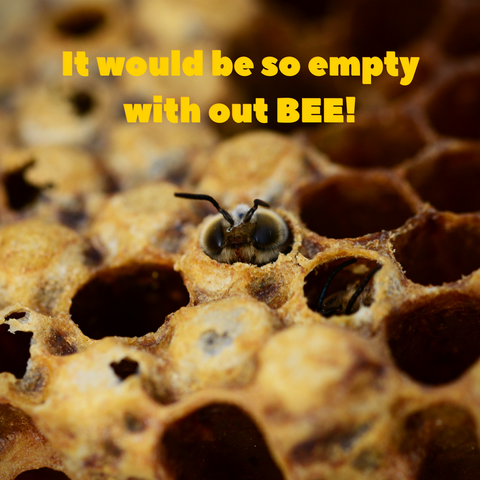
Experts put this down to loss of habitat, food sources, increase in pesticides and also climate change.
It is easy to underestimate the importance of bees to the environment - however bees have a huge role to play, especially with regards to our diets. Thanks to bees and their role in pollination, we can enjoy a range of foods and materials. From coffee to cotton, courgettes to coriander!

Do you love bees too? Do you want to attract bees into your garden? -then check out some of these tips! You would 'bee' crazy to 'misszzz' out on them!
(Okay we promise we will stop with the bee jokes).

1. Be natural
Stop using pesticides in your garden. The less harmful chemicals in the air can only be a good thing for the bees.
2. Go wild
Let some wildflowers grow in your garden. Encourage your family and friends to let them grow around their homes.
Tip - honeysuckle, fox glove, sunflowers and bluebells are adored by bees.

3. Check your lawn
Have you spotted any dandelions? Try to let these grow as they are brilliant for enticing bees into your garden. Try to leave a patch to grow so that the dandelions are given a chance to bloom.
Fact - Bees make nests and the location varies on the type of bee.
This may be under ground, in vegetation or in little holes or crevices in walls or tree stumps.
4. Get planting
Shrubs or trees can make a huge difference to bees. Fruit trees in particular can act as a large food source. Try willow or apple trees.
Fact - Lavender is a big hit with bumblebees, along with flower and mason bees!
This plant is best placed in the sun and is known to thrive even in dry soil.

5. Drip drop drip!
Another way to make life easier for the pollinators relates to water. Bees sometimes need to drink water, however if the source of water is too deep then they can drown.

A shallow dish filled with pebbles or small rocks along with water will help provide a safer drinking pool for the bees.
Want to bring a little of that 'bee' magic into your home?
Have you seen our latest linen tea towels? Made in the UK, hand printed and pure linen, these are the perfect cloth for drying dishes and glasses.

Check them out here!
If you love these as much as we do, you have to check out the rest of our range! From matching napkins, place mats and peg bags - you can really spruce up your home with our Honey Bee collection.

We don't just offer home accessories. We also have a range of skin care that we are in love with! Made with pure beeswax because when it comes to skin, we believe that the best means natural.

We also work very hard to make sure that our products are eco-friendly and sustainable. We are proud that all of our skin care products are made in the UK and are cruelty free.
In creating this blog, the Team at Nutscene read a wide collection of sources on the development and conservation of bees within the UK. Here are some really great sources that we read on the topic:
https://www.bumblebeeconservation.org/bees-needs/
https://www.sustainweb.org/foodfacts/bees_are_important/
http://beeaware.org.au/archive-pest/varroa-mites/#ad-image-0
https://friendsoftheearth.uk/bees/why-do-we-need-bees
https://www.bbka.org.uk/fun-facts-abut-bees
https://www.rhs.org.uk/advice/profile?PID=960

WE HOPE YOU ENJOYED THIS BLOG POST!
DO YOU HAVE A FAVOURITE TIP FOR ATTRACTING BEES THAT WE DIDN'T MENTION HERE? LET US KNOW!
Lots of love,
The Nutscene Team




